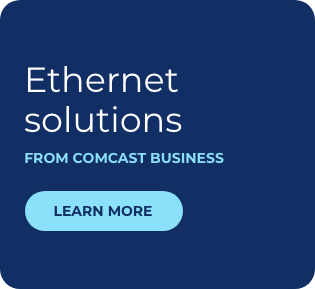Supporting Meaningful Use With Robust Data Networks

Healthcare providers are under constant pressure to improve care while making operations more efficient and cost-effective. Spurred in part by the American Recovery and Reinvestment Act of 2009, they are turning to information technology to enhance services, improve productivity, and be more efficient all while moving towards the “Meaningful Use” of electronic health records (EHRs).
Meaningful Use has become one of the single largest drivers of healthcare IT: Nearly75 percent of IT decision makers surveyed by Health IT Outcomes said that EHRs and Meaningful Use are either a priority or a top priority in health IT for 2015.(1) Many healthcare organizations are well on their way toward Meaningful Use, working through the cost, training and resource challenges the mandate brings. It has the potential for far-reaching effects across multiple functional areas within healthcare.
But there is still much work to be done to realize all the benefits of Meaningful Use. The mandate requires significant cost investments in upgrading network infrastructure, installing technology to support EHRs, training staff and more. At the same time, budgets are shrinking, making it crucial to be strategic about how to best allocate IT dollars.
ELECTRONIC HEALTH RECORDS CAN IMPROVE PATIENT OUTCOMES
Healthcare providers can improve efficiency by implementing automated healthcare information systems like EHRs to replace paper medical charts. EHR technology provides doctors with a complete view of the patient—from demographics and vital signs to medications, allergies and more. EHRs—a central component for compliance with Meaningful Use Stage 1 requirements—help doctors easily view and transmit records, which can lead to more accurate diagnosis and treatment of patients.
In addition to improving healthcare operations, EHR systems can help providers reduce mortality rates and complications. For example, hospitals with EHR systems are better able to capture data involving patients’ co-morbidities and other risks. This lets clinicians better manage hospital patients, resulting in more positive, predictable clinical outcomes and significantly improving mortality rates for heart attack, respiratory failure, and lower intestine surgery.(2) EHRs have also been shown to improve quality of care for screenings such as breast cancer and diabetes.(3)
INTEGRATION OF PACS
The concept of Picture Archiving and Communication System (PACS) imaging was introduced in the early 1980s. Today, it is a critical component of most health organizations’ care delivery process. PACS can provide economical storage of and convenient accessto a range of images from multiple imaging devices. Electronic images and reports are transmitted digitally via PACS, eliminating the need to manually file, retrieve or transport film jackets.
To comply with Stage 2 of Meaningful Use, healthcare providers must offer patients the ability to view, transmit, and download their health information. And while not explicitly mandated by Meaningful Use core objectives, many organizations are starting to integrate their PACS with their EHR systems so that images such as MRIs and CT scans can be shared between physicians and with patients through patient portals. However, the size and volume of these imaging files can place stress on hospital networks, creating data capacity and data center connectivity issues.
COLLABORATION THROUGH HEALTH INFORMATION EXCHANGES
Electronic health information exchange (HIE) allows doctors, nurses, pharmacists and other healthcare providers and patients to appropriately access and securely share a patient’s vital medical information electronically, thus improving the speed, quality, safety andcost of patient care. According to HIMSS, HIE is a crucial factor in supporting healthcare transformation.
Meaningful Use Stage 1 focuses on the ability to capture patient health data electronically, while Meaningful Use Stages 2 and 3 are expected to set rigorous standards for electronically transmitting patient data and results across multiple, disparate organizations, including pharmacies, payers and unaffiliated providers. HIE allows this active data access and sharing of lab results, case summaries, public health reports, medical device interoperability and more.
According to HIMSS, health information exchanges and data networks will expand the volume of records being transmitted, increase the types of data being sent, expand the types of organizations and the number of people on the network, and require security for all data. HIMSS notes that HIE and Interoperability will continue to drive the explosion of network traffic as healthcare organizations share more and more data.
TECHNOLOGY IMPLICATIONS: NETWORK BANDWIDTH
Sufficient network bandwidth is a key enabler toward supporting key healthcare initiatives. It is needed for the increased storage capacity hospitals require as they convert patient medical data to EHRs. It is needed to transmit large quantities of data within the hospital and across the healthcare ecosystem. With more applications moving to the cloud, more mobile devices on the network to capture patient data, and more portals for patients to access their health data, bandwidth needs are exploding.
To save money, time and resources, many healthcare IT professionals are moving the maintenance of servers, storage and hardware to the cloud. Because data-intensive cloud systems require robust network bandwidth, healthcare IT professionals would be wise to take a hard look at their internal data networks and whether those networks can support the demands placed on them from cloud services, EHRs, PACS, and HIE.
Some organizations may find that their existing technology infrastructure is not optimized for handling and storing the vast amounts of data being generated from and transmitted between multiple applications and organizations.
Here are a few questions to consider during a review of an existing network:
- Are your EHR or PACs applications performing to your expectations?
- Is your network scalable to meet growing data demands?
- Do your legacy network technologies cost too much?
- Is data center connectivity an issue?
It is likely that the answers to these questions will drive healthcare organizations to consider the advantages of Ethernet. Ethernet is an exceptional networking foundation to help healthcare organizations meet the high-bandwidth, low latency requirements necessary when implementing healthcare technology. It links geographically dispersed facilities together on a single network, enables high-performance network access and securely connects to cloud-based applications and data center resources. It is a dynamic platform that drives application performance with the ability to converge traffic and offers remarkable expandability. Ethernet also has a lower total cost of ownership than legacy network technologies like T1 lines—an important advantage for healthcare organizations struggling with the costs of implementing technology.
Today’s strained healthcare system presents a variety of challenges for healthcare providers. Physicians and medical staff are overwhelmed by caseloads. Patients demand increased access to services, higher quality care, and more participation in their own care. Hospitals and health systems need to collaborate and coordinate patient care across a variety of entities and providers.
Sources:
1 Health IT Top Ten Trends 2015. Health IT Outcomes. November 2014
2 EMR Effectiveness: The Positive Benefit EMR Adoptions Has on Mortality Rates. HIMSS Analytics. August 2014
3 Lisa Kern et al., Electronic Health Records and Ambulatory Quality of Care, Journal of General Internal Medicine, October 3, 2012
4 U.S. Medical Imaging Informatics Industry Reconnects with Growth in the Enterprise Image Archiving Market. Frost & Sullivan. 2012
5 HIMSS.org
Healthcare providers are under constant pressure to improve care while making operations more efficient and cost-effective. Spurred in part by the American Recovery and Reinvestment Act of 2009, they are turning to information technology to enhance services, improve productivity, and be more efficient.
Locked Content
Click on the button below to get access
Unlock NowOr sign in to access all content on Comcast Business Community
Learn how Comcast Business can help
keep you ready for what's next.











